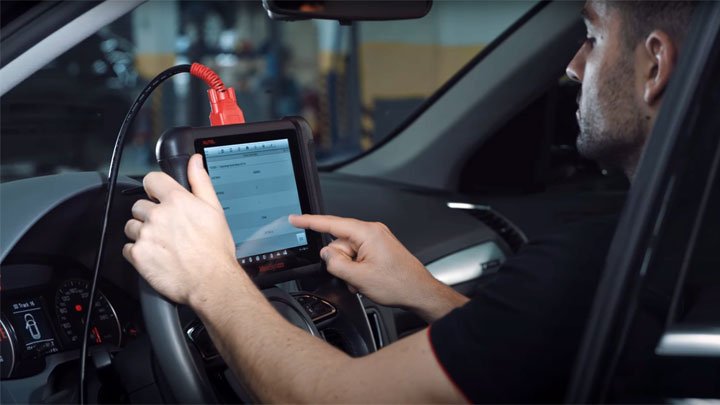Comprehensive Guide to Car Door Lock Repair: Troubleshooting and Solutions
The stability and performance of a vehicle's door locks are essential for both the security of the car and the safety of its occupants. key cutting can experience a variety of problems, varying from minor mechanical glitches to finish failures. This article seeks to supply a useful overview of car door lock repair, laying out common problems, diagnostic treatments, and solutions.
Understanding Car Door Locks
Before delving into repair treatments, it is crucial to comprehend the elements of a normal car door lock. There are 2 main kinds of locks: mechanical and electronic.
Elements of a Car Door Lock System
- Lock Cylinder: The part where the key is inserted.
- Latches: Mechanisms that hold the door shut.
- Actuator: Electric motor in electronic locks that helps in locking and unlocking.
- Linkage: Connects the lock cylinder to the latch.
- Remote Key Fob: In electronic systems, this is used to lock and unlock the doors from a range.
Common Issues with Car Door Locks
Car door locks can fail for a wide range of factors. Here are some common issues experienced by vehicle owners:
- Sticking or Frozen Locks: Especially in winter, locks can become difficult to operate.
- Lock Not Engaging or Disengaging: Both mechanical and electronic locks can face issues where they do not respond to the key or remote.
- Key Jams: The key may get stuck in the lock, making it difficult to lock or unlock the door.
- Remote Malfunction: In electronic systems, the key fob may not work due to battery issues or programming problems.
- Physical Damage: Vandalism or mishaps can damage the lock mechanism.
Troubleshooting Car Door Lock Issues
When a car door lock is not working properly, it is important to diagnose the problem properly before proceeding with a repair. Below are steps that can assist fix the concern:
Step-by-Step Troubleshooting
Visual Inspection:
- Check the door lock and surrounding components for visible damage.
- Analyze the key for wear and tear.
Check the Key:
- If the lock is sticking or not engaging, attempt using an extra key if available.
- Guarantee the key is clean from dirt and debris.
Examine the Actuator:
- Listen for any sounds when pushing the key fob. A clicking sound may show a malfunctioning actuator.
Check Door Wiring:
- Check the electrical wiring that links the door lock to the vehicle's electrical system.
- Look for disconnected or torn wires.
Temperature level Influence:
- If the lock is sticking in winter, apply lithium grease to assist lubricate the mechanism.
Repairing Common Door Lock Issues
When the problem has been diagnosed, the repair can start. Here are some common repair techniques for numerous issues:
Fixing a Sticking or Frozen Lock
- Cleaning: Use a graphite lube or silicone spray to clean and lube the mechanism.
- Heating: If frozen, use a hairdryer to warm the location around the locking mechanism carefully, preventing overheating.
Fixing a Lock Not Engaging/Disengaging
Lock Cylinder Replacement:
- If the lock cylinder is worn, think about changing it. This often includes spying off the door panel to access the lock system.
Actuator Replacement:
- For electronic locks, if the actuator is defective, it will need replacement. Make sure to disconnect the battery before trying this repair.
Repairing a Jammed Key
- Extraction Tool: If a key is stuck, use a pair of needle-nose pliers to gently pull it out, or a key extractor.
- Lock Lubrication: Apply a small amount of lubricant to relieve the procedure.
Remote Key Fob Malfunction
- Battery Replacement: Most remotes have exchangeable batteries. Follow the manufacturer's directions to change the battery.
- Reprogramming: Sometimes, the remote requirements to be reprogrammed. Describe the vehicle's manual for steps to reprogram the key fob.
Physical Damage Repairs
- Door Lock Assembly Replacement: If the lock is physically harmed, total replacement of the lock assembly may be needed.
- Professional Help: If unsure about DIY repairs, look for assistance from a qualified mechanic.
Maintenance Tips for Car Door Locks
To lengthen the life of car door locks, regular upkeep is necessary. The following practices can help preserve ideal performance:
- Regular Lubrication: Apply appropriate lubricant to the locks every couple of months.
- Keep Keys Clean: Regularly tidy the car keys to avoid dirt buildup.
- Prevent Excessive Force: Do not use extreme force when locking or opening; this can trigger damage over time.
- Look for Signs of Wear: Be mindful to any modifications in the lock's performance and address concerns promptly.
Frequently Asked Questions about Car Door Lock Repair
Q: How can I inform if my door lock is broken?A: Common
indications consist of the lock not engaging or disengaging, a jammed key, sounds from the door when using the key fob, or noticeable damage to the lock assembly.
Q: Can I repair a car door lock myself?A: Yes, lots of easy concerns can be attended to by following the fixing actions in this article, but complicated problems might need professional aid. Q: What kind of lubricant should I utilize
for my locks?A: It is best to use graphite powder or silicone-based lubricants considering that oil can draw in dirt and gunk. Q: How much does it generally cost to change a car door lock?A: The cost can vary commonly
based upon the vehicle's make and model, however common replacement costs
can range from ₤ 100 to ₤ 300, including labor. Car door lock repair can appear difficult, but understanding the parts and typical issues can make the process far more workable. Whether tackling small repairs yourself or looking for expert assistance for more significant problems, keeping the door locks operating properly is essential for vehicle security and safety. remote key repair and prompt attention to issues can significantly extend the life of your car's locking system.

